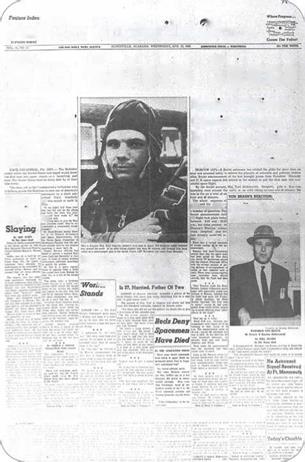Soviets Take the Lead
Sputnik 1 weighed 183 pounds (83 kilograms), compared with the tiny U. S. satellite weighing 3.5 pounds (1.5 kilograms) that still awaited launch by a U. S. Navy Vanguard rocket. Soviet leader Nikita Khrushchev promised an even bigger surprise. This came on November 3, 1957, when the Russians


![]()

![]()


![]()
![]()
![]()
![]()
![]()
![]()
![]()






 О The space race was a competition between two nations. When the Soviet Union sent the first person into space in 1961, the United States raced to catch up.
О The space race was a competition between two nations. When the Soviet Union sent the first person into space in 1961, the United States raced to catch up.
sent up Sputnik 2, carrying a dog named Laika. In January 1958, the United States responded by launching its first satellite, Explorer 1.
The success of the Soviet space program caused a reaction in the United States. To counter the Soviet lead in space exploration and rocketry, the U. S. government established the National Aeronautics and Space Administration (NASA) in October 1958.
The Soviets, however, continued to chalk up firsts. In 1959 their Luna 2 probe made a crash landing on the Moon. Then another Luna probe photographed the far side of the Moon for the first time. Soviet cosmonauts and American astronauts were already in training for manned missions. Soviet plans remained shrouded in secrecy, however, while NASA introduced its seven Mercury astronauts to the media.
In 1961, the Soviet Union made more headlines when Yuri Gagarin became the first person in space. His Vostok spacecraft was three times heavier than the U. S. Mercury capsule, in which John Glenn became the first American to orbit Earth in 1962.










